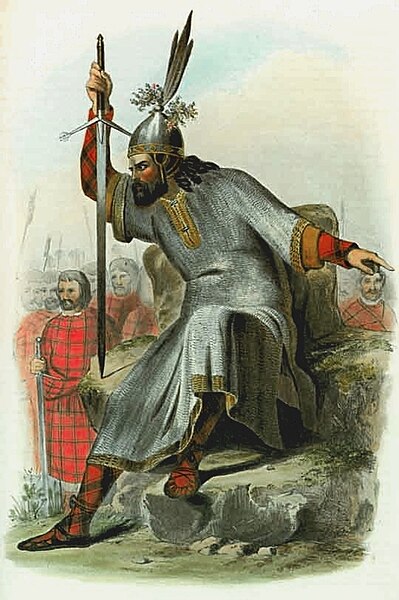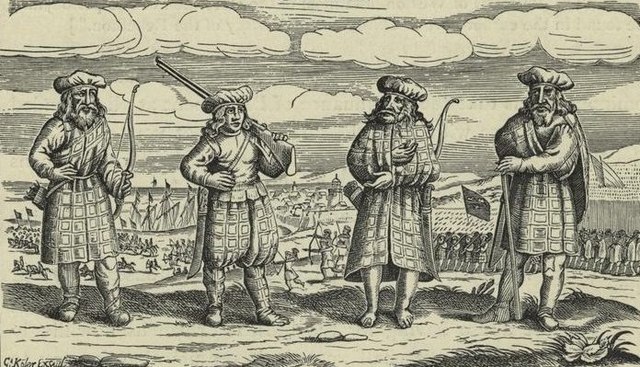Clan Macdonald of Sleat, sometimes known as Clan Donald North and in Gaelic Clann Ùisdein, is a Scottish clan and a branch of Clan Donald—one of the largest Scottish clans. The founder of the Macdonalds of Sleat was Ùisdean, or Hugh, a 6th great-grandson of Somerled, a 12th-century Lord of the Isles. The clan is known in Gaelic as Clann Ùisdein, and its chief's Gaelic designation is Mac Ùisdein, in reference to the clan's founder. Both the clan and its clan chief are recognised by the Lord Lyon King of Arms, who is the heraldic authority in Scotland.
R.R. McIan's Victorian era romanticised depiction of a Macdonald, lord of the Isles.
Ruinous Dunscaith Castle, Skye. The castle was once a MacLeod stronghold. It became the earliest seat of Clann Ùisdein in the lands of Sleat.
Duntulm Castle in Trotternish, Skye. Trotternish was the subject of territorial feuding between the Macdonalds of Sleat and MacLeods of Dunvegan in the 16th and early 17th centuries.
Castle Camus, known since the 17th century as Knock Castle, is located in Skye. It was once a Macleod castle though it was captured by the Macdonalds of Sleat in the early 15th century. The castle was finally abandoned in 1689.
A Scottish clan is a kinship group among the Scottish people. Clans give a sense of shared heritage and descent to members, and in modern times have an official structure recognised by the Court of the Lord Lyon, which regulates Scottish heraldry and coats of arms. Most clans have their own tartan patterns, usually dating from the 19th century, which members may incorporate into kilts or other clothing.
A romantic depiction of Highland Chiefs from 1831
Scottish soldiers, identified as of Donald Mackay, 1st Lord Reay's regiment, in service of Gustavus Adolphus (1630–31)
The Battle of Culloden, as depicted in a painting by David Morier. Modern historical thinking gives less importance to this battle as a factor in the demise of clanship.
David Wilkie's 1829 flattering portrait of the kilted King George IV, with lighting chosen to tone down the brightness of his kilt and his knees shown bare, without the pink tights he wore at the event.








